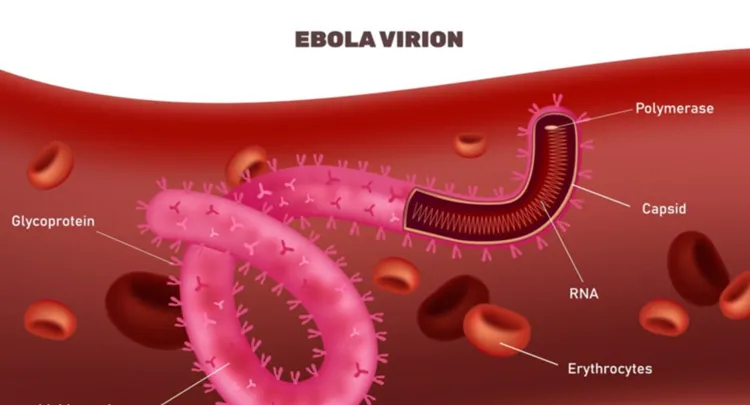Understanding Ebola Virus Disease Symptoms and Prevention Tips

Author | Academician Gao Fu's Team
Review | Wang Han, Associate Researcher at the School of Future Technology, Peking University
Produced by: China Science and Technology Publishing House Co., Ltd., Beijing Zhongke Xinghe Cultural Media Co., Ltd.
Published by: Science Popularization Department of the China Association for Science and Technology.
This article is a supported work of the Science Popularization China Creation and Cultivation Program.
Imagine if the scenes of a virulent outbreak depicted in movies were to become a reality—what a shocking sight that would be?
In the vast lands of Africa lies an invisible killer—the Ebola virus. With its astonishing fatality rate and terrifying symptoms, it has instilled fear in countless individuals.
The Ebola virus belongs to the Filoviridae family and is a pathogen capable of causing fatal hemorrhagic fever. Once infected, patients may experience high fever, muscle pain, headache, and sore throat, followed by vomiting, diarrhea, and rashes, ultimately leading to internal bleeding and shock. The mortality rate can reach up to 90%, making it one of the deadliest viruses, often referred to as the 'blackboard eraser of life.'
This virus is very cunning; it can spread through direct contact with the infected person's blood, secretions, or other bodily fluids. Even after the infected person has died, their body remains infectious. The virus has erupted multiple times in Africa. This is linked to a local funeral custom called the 'kissing farewell,' where people kiss the deceased on the face to say their goodbyes.
Although the Ebola virus has posed a severe threat to human life for many years, the lack of understanding of its mechanism for invading host cells has significantly hindered the development of antiviral drugs. To address the critical issue of 'how the Ebola virus invades host cells,' the Institute of Microbiology at the Chinese Academy of Sciences, led by Academician Gao Fu, has conducted a systematic study on the invasion mechanism of the Ebola virus, focusing on two aspects: the adhesion of the Ebola virus to host cells and the receptor-mediated fusion of the virus membrane with the host cell.
First, the Ebola virus non-specifically attaches to the surface of the host cell through adhesion molecules on the host cell membrane. Then, it enters the host cell membrane by means of macropinocytosis, forming an endosome.
Subsequently, the Ebola virus utilizes traditional pathways for cellular transport, moving from endosomes to early endosomes, and finally to late endosomes-lysosomes. Inside the late endosome-lysosome, as the lumen environment gradually acidifies, the viral glycoprotein GP is recognized and cleaved by the host cell's cathepsin B and cathepsin L, exposing the receptor-binding site on GP1 that is masked by the glycan cap structure. This site then binds to the host cell receptor NPC1, and the contact with the host receptor prompts a conformational change in the viral GP protein, releasing the fusion peptide that was originally folded stably within the GP protein and inserting it into the late endosome-lysosome membrane.
As the fusion peptide continues to fold, the viral envelope comes increasingly close to the late endosome-lysosome membrane. The fluidity of the membrane lipids ultimately leads to the fusion of the viral envelope with the host endosomal membrane, allowing the viral genetic material (RNA/nucleic acid) to be released into the host cell. At this point, the Ebola virus has completed the entire process of invading the host cell.
The aforementioned work comprehensively and systematically analyzes the mechanisms by which the Ebola virus invades host cells from two key aspects: adhesion and membrane fusion. It addresses the long-standing issue of the unclear invasion mechanism of the Ebola virus, representing a significant breakthrough in the field of international virology in recent years. This research provides new targets for the design of antiviral drugs and was selected as one of the top ten progress in life sciences in China for 2016.
Although the Ebola virus poses a significant threat to humanity, it has also sparked enthusiasm among scientists for research. Currently, scientists from various countries are working diligently to find more effective vaccines and treatments, believing that in the near future, humanity will be able to better control this virus.
© 2025 Health Tribe.


